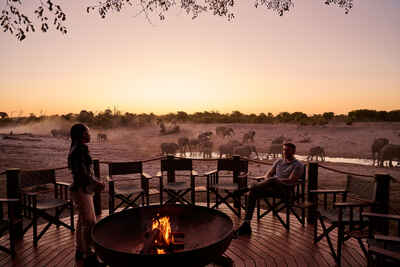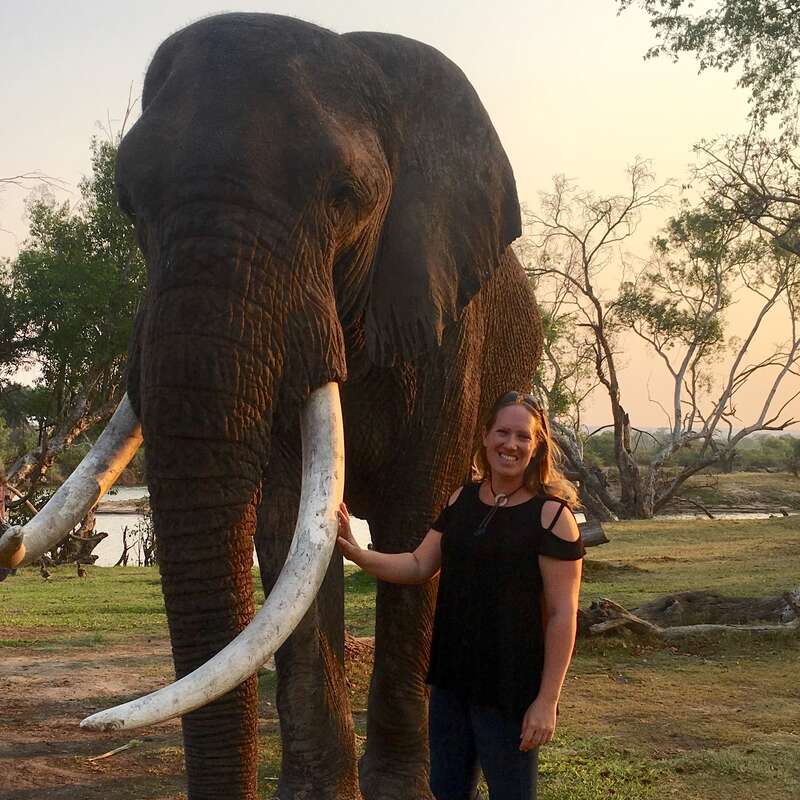About Savute Safari Lodge
Perched on the banks of the Savuti Channel within Chobe National Park, Savute Safari Lodge offers a good ...
... location from which to explore the nearby Savuti Marshes. Comfortable without being overly luxurious, the camp enjoys views over the Channel and its two pumped waterholes, which – especially during the dry season – attract vast numbers of elephant to drink in the afternoons and evenings.
Savute Safari Lodge has a down-to-earth feel and attracts an eclectic mix of guests who enjoy great hospitality, friendly staff and some excellent guiding, all in a top game-viewing region, particularly during the dry season. The lodge itself may not suit those wanting a more bushcamp feel, but the dining area overlooking the channel and nearby waterhole is a big plus. The region also offers a good contrast to the Okavango Delta, although a greater number of visitors than in the private reserves can make it feel less exclusive.
Our view
Savute Safari Lodge has a down-to-earth feel and attracts an eclectic mix of guests who enjoy great hospitality, friendly staff and some excellent guiding, all in a top game-viewing region, particularly during the dry season. The lodge itself may not suit those wanting a more bushcamp feel, but the dining area overlooking the channel and nearby waterhole is a big plus. The region also offers a good contrast to the Okavango Delta, although a greater number of visitors than in the private reserves can make it feel less exclusive.
Accommodation
12 chalets
Children
Best for 12+
Open
Closed 01-14 Feb
Activities

4WD Safari

Birdwatching

Helicopter

Private activities
Traveller reviews of Savute Safari Lodge
37 real, un-edited reviews from Expert Africa's travellers.
Arrived 24 May 2025, 3 nights
"Savute Safari Lodge review"
Overall rating: Excellent
Arrived 13 Jun 2023, 2 nights
"Savute Safari Lodge review"
Overall rating: Excellent
Arrived 26 May 2022, 3 nights
"Savute Safari Lodge review"
Overall rating: Excellent
Arrived 4 Nov 2019, 2 nights
"exciting, interesting, and full of fun"
Overall rating: Excellent
Arrived 24 Mar 2018, 2 nights
"Savute Safari Lodge review"
Overall rating: Poor
Arrived 26 Jan 2018, 3 nights
"Our annual African adventure 3rd leg"
Overall rating: Excellent
Arrived 9 Oct 2017, 3 nights
"Savute Safari Lodge Review"
Overall rating: Excellent
Arrived 19 May 2017, 3 nights
"Savute Safari Lodge review"
Overall rating: Excellent
Arrived 17 Nov 2016, 3 nights
"second lodge in botswana trip"
Overall rating: Excellent
Arrived 3 Aug 2016, 3 nights
"Great intro to Botswana"
Overall rating: Excellent
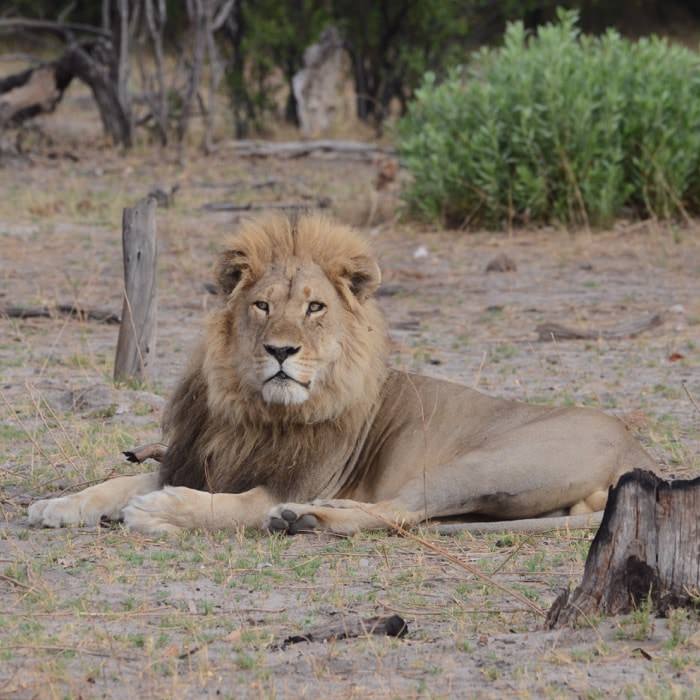

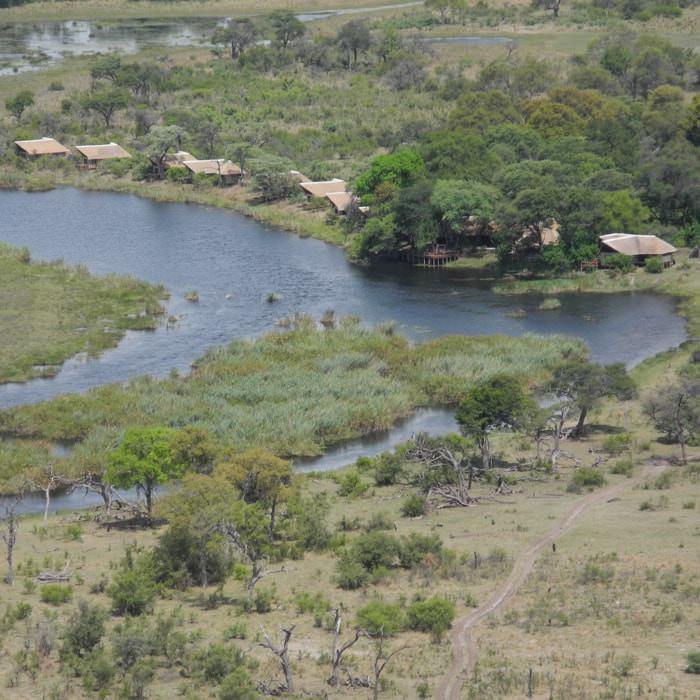
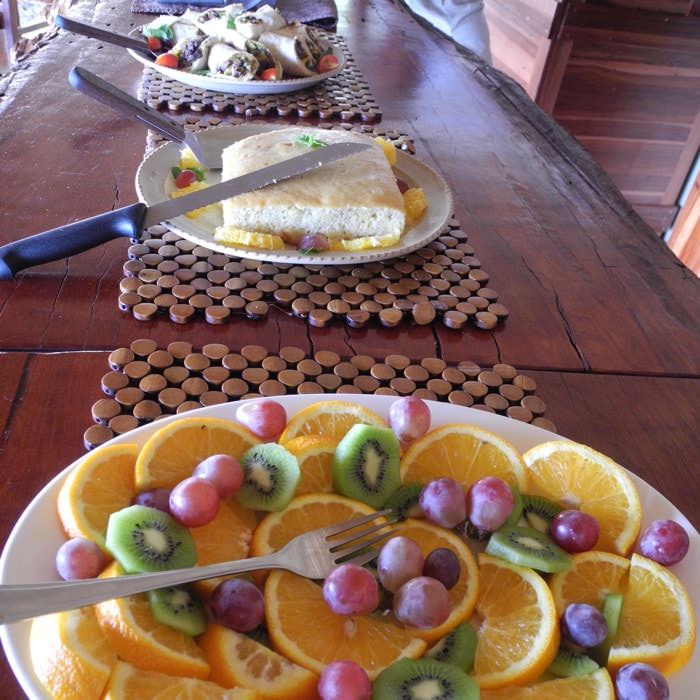
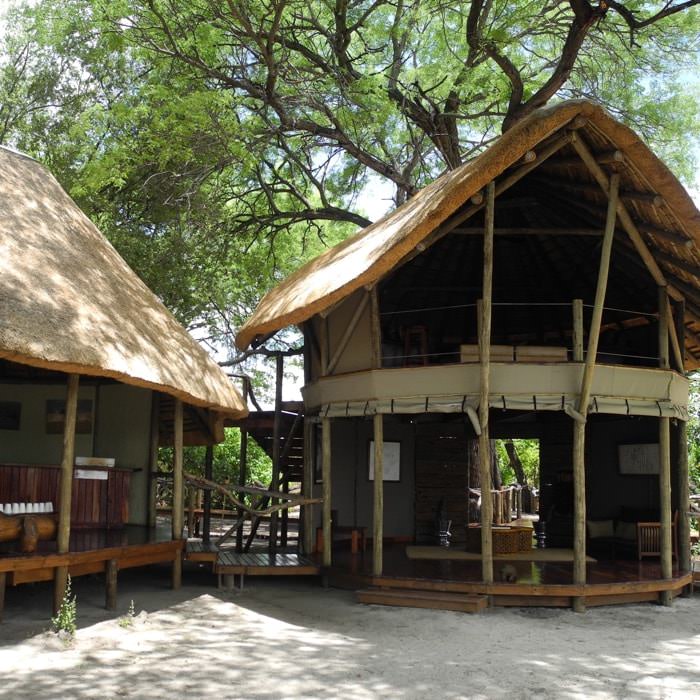

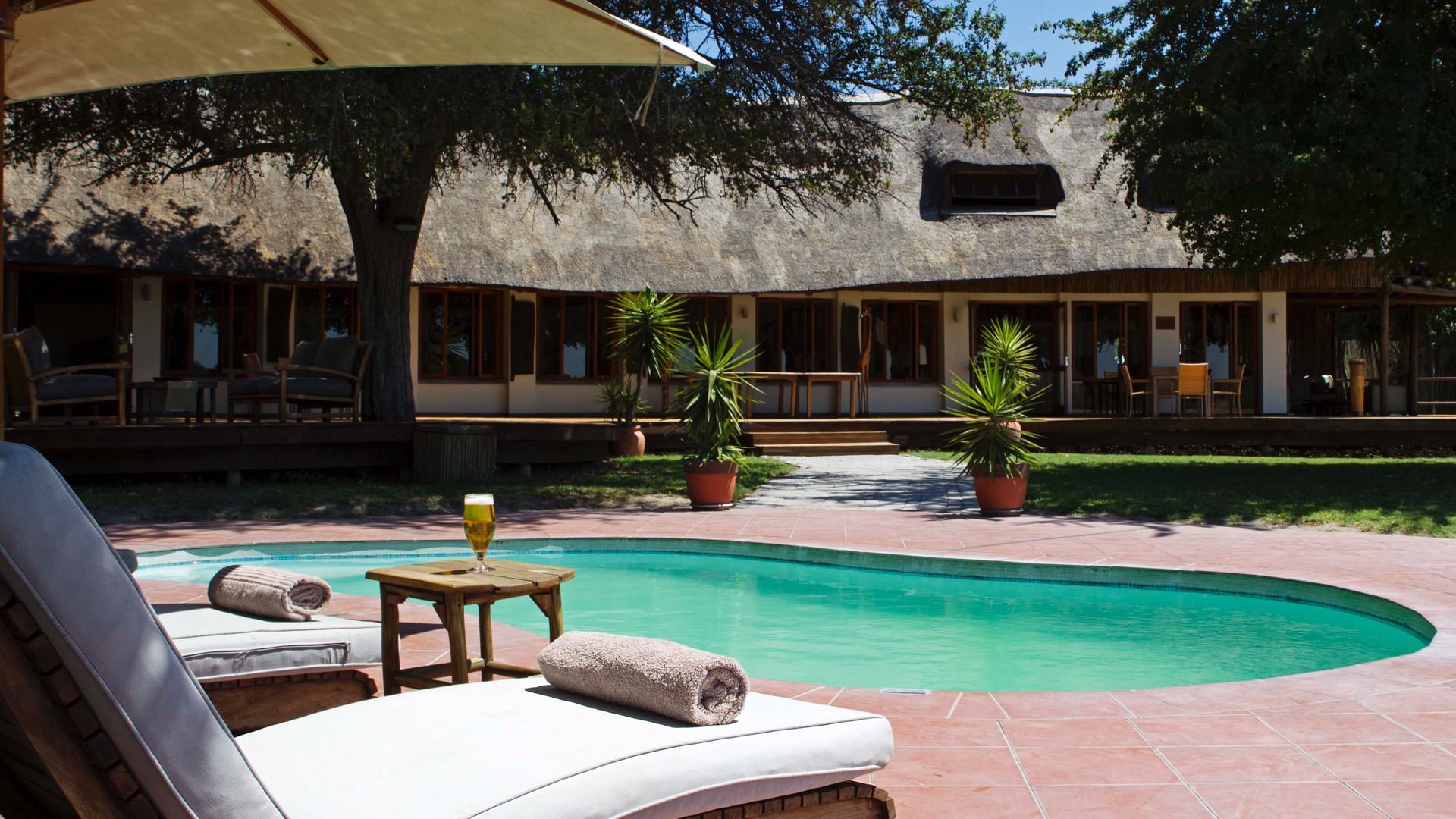
Expert Africa's gallery
When we travel we take lots of photos ourselves to give you a real and un-edited view of the safaris. See our 12 pictures and 1 videos of Savute Safari Lodge to get the candid view.
View gallerySafaris visiting Savute Safari Lodge
Just ideas, we'll always tailor-make a trip for you
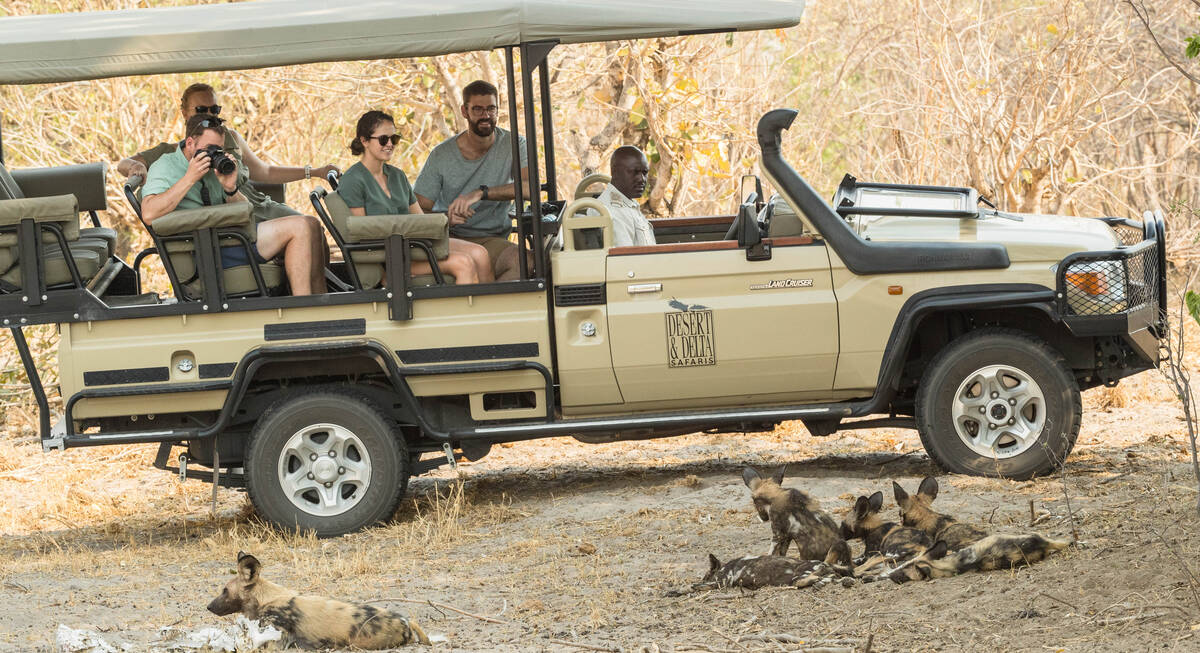
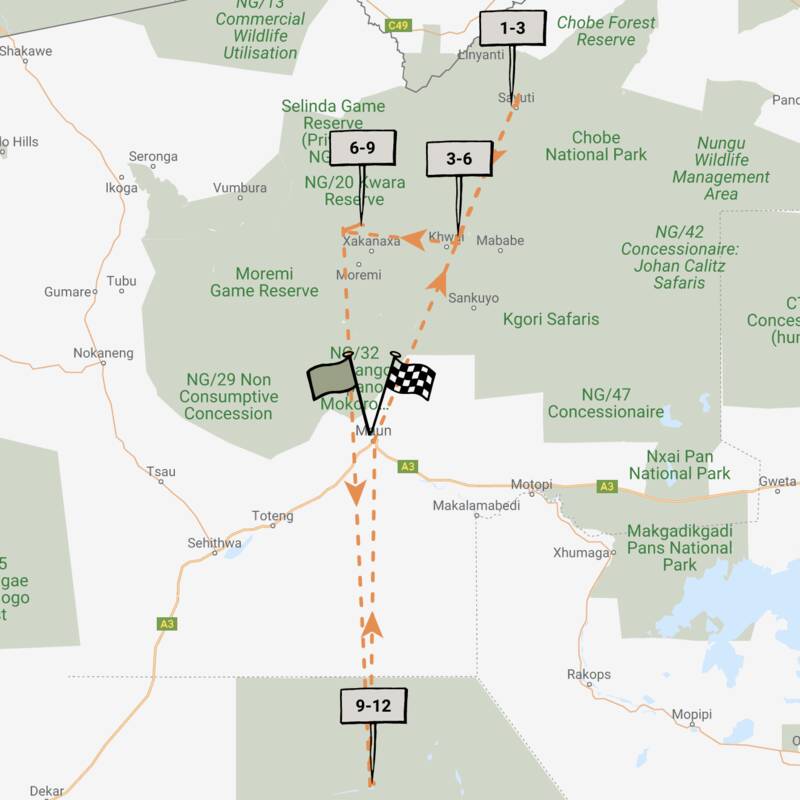
Porcupine Safari
11 days • 4 locations • 1 country
MAUN AIRPORT TO MAUN AIRPORT
Visit dramatically contrasting landscapes boasting a variety of species during this exploration of Botswana’s top-safari destinations. A combination of national parks and private reserves allows for a range of activities.
Visiting Chobe, Central Kalahari and 2 other areas
US$11,780 - US$16,860 per person
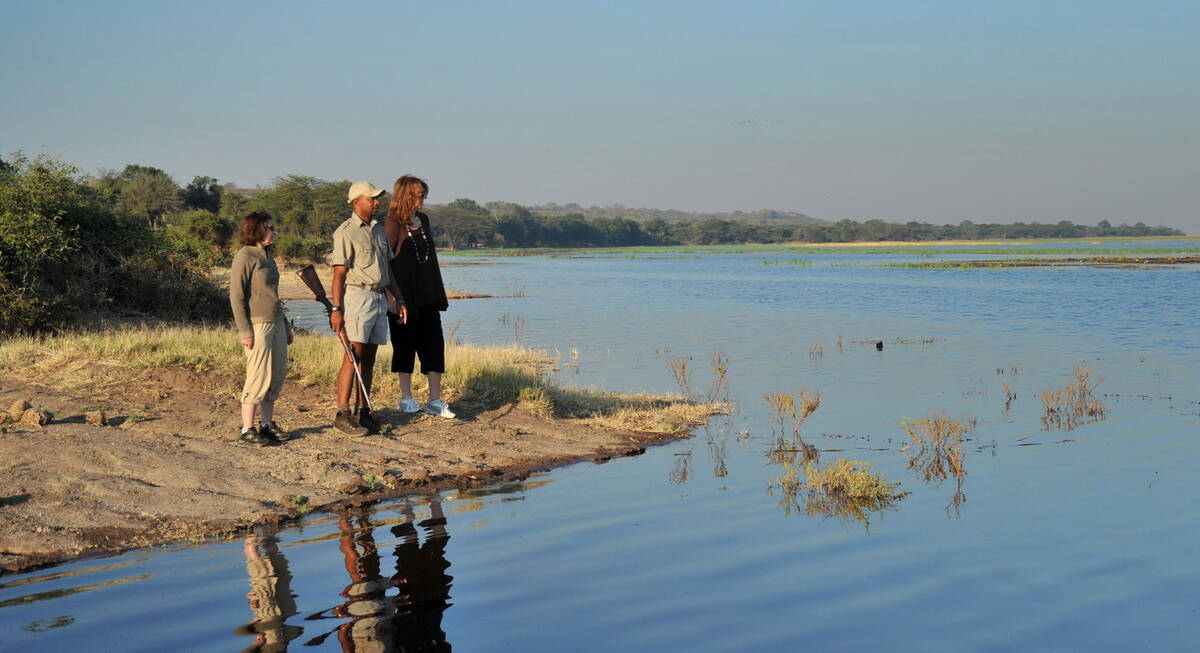
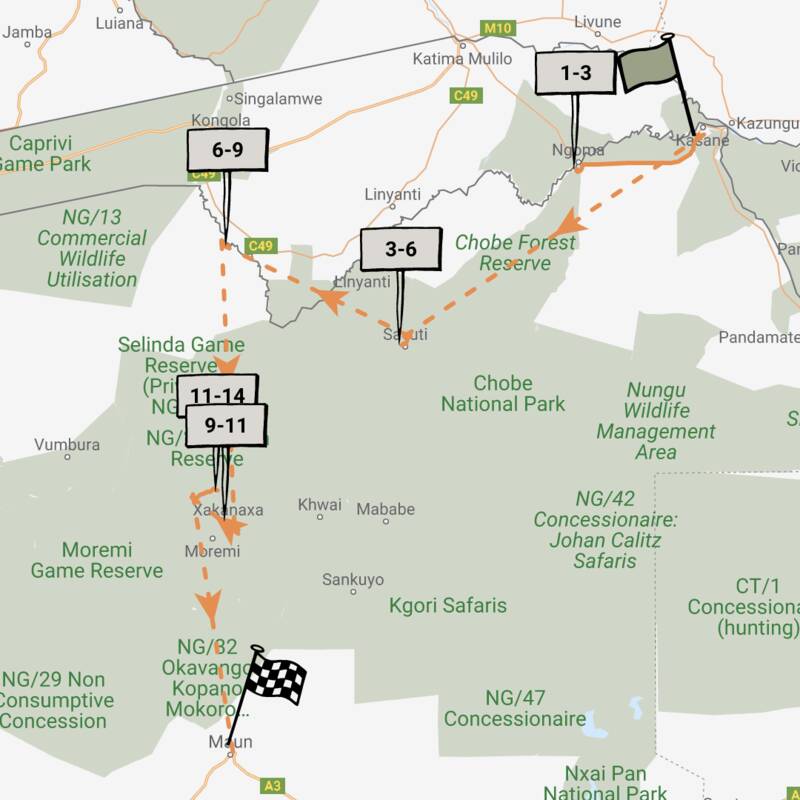
Wild Dog Safari
13 days • 5 locations • 1 country
KASANE AIRPORT TO MAUN AIRPORT
An in-depth discovery of northern Botswana’s wilderness, from Chobe and the private Kwando Reserve to the Moremi and iconic Okavango Delta with a great variety of activities and wildlife.
Visiting Chobe, Moremi & Surrounds and 2 other areas
US$12,930 - US$21,350 per person
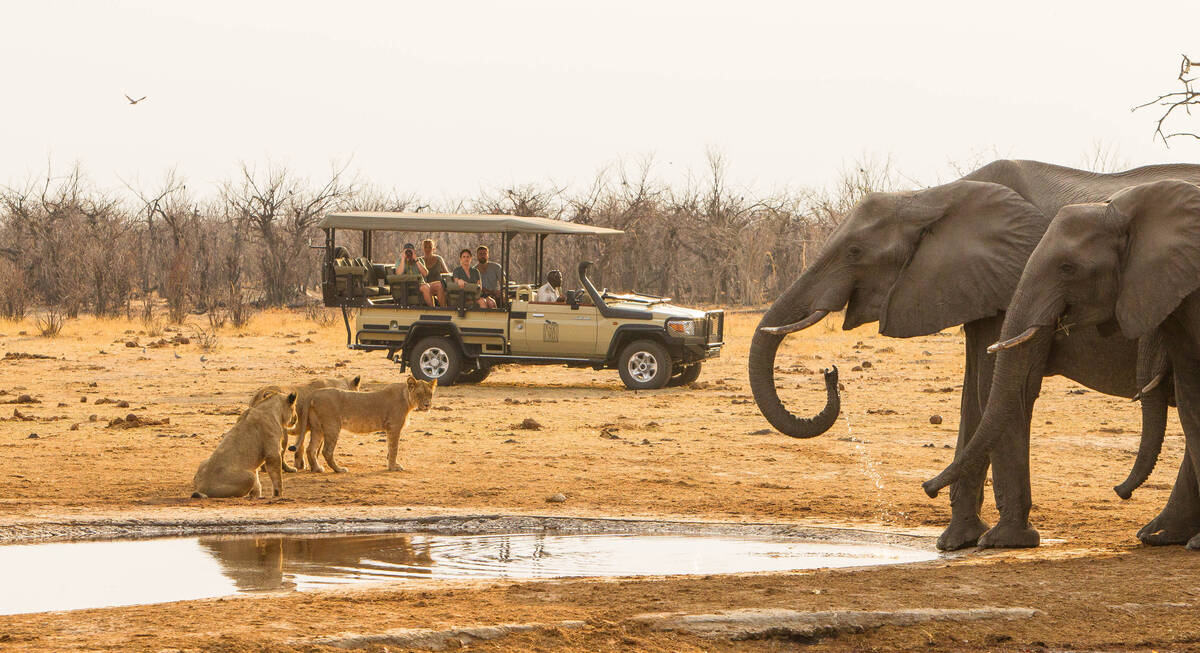
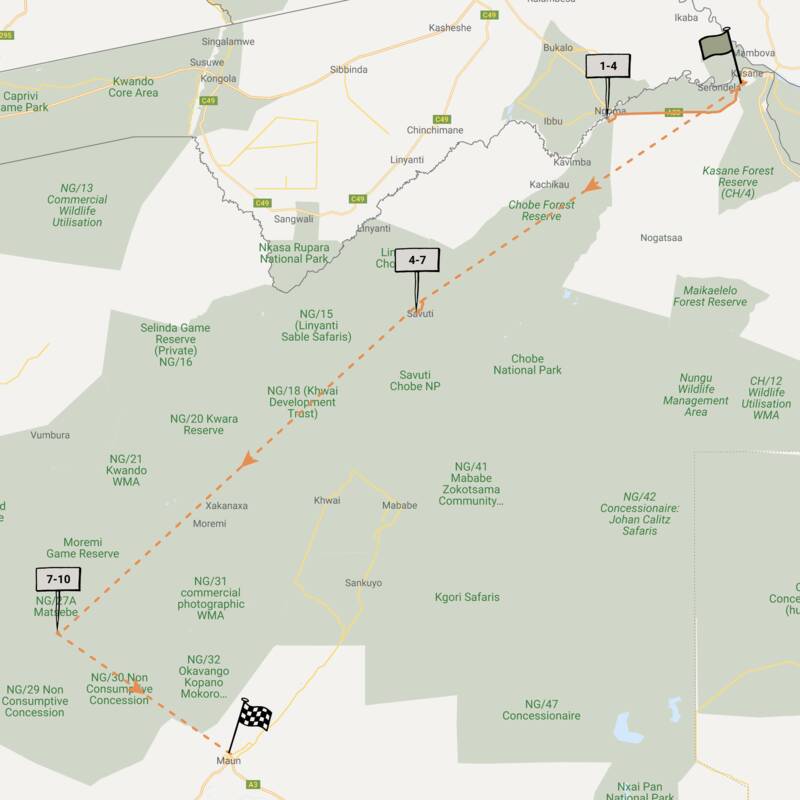
Spring Hare Safari
9 days • 3 locations • 1 country
KASANE AIRPORT TO MAUN AIRPORT
An authentic and diverse safari to Botswana combining the Chobe Forest Reserve, Savuti Marshes and the Okavango Delta. Strong wildlife viewing, a variety of activities and excellent value camps.
Visiting Chobe, Okavango Delta
US$8,710 - US$14,180 per person
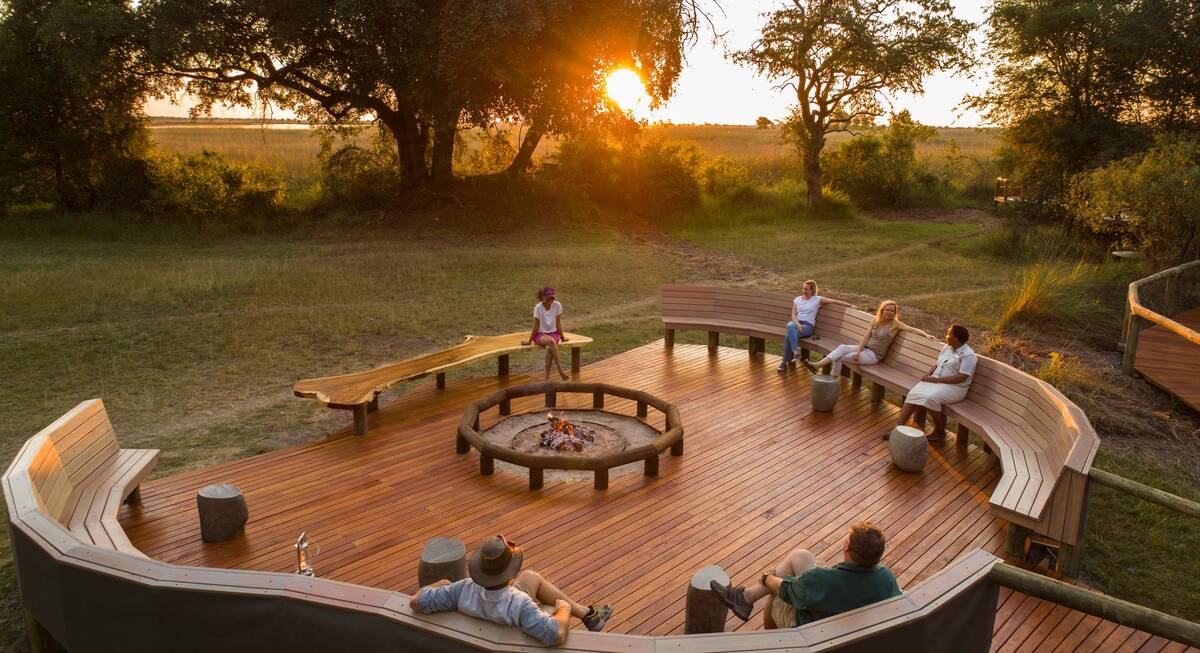
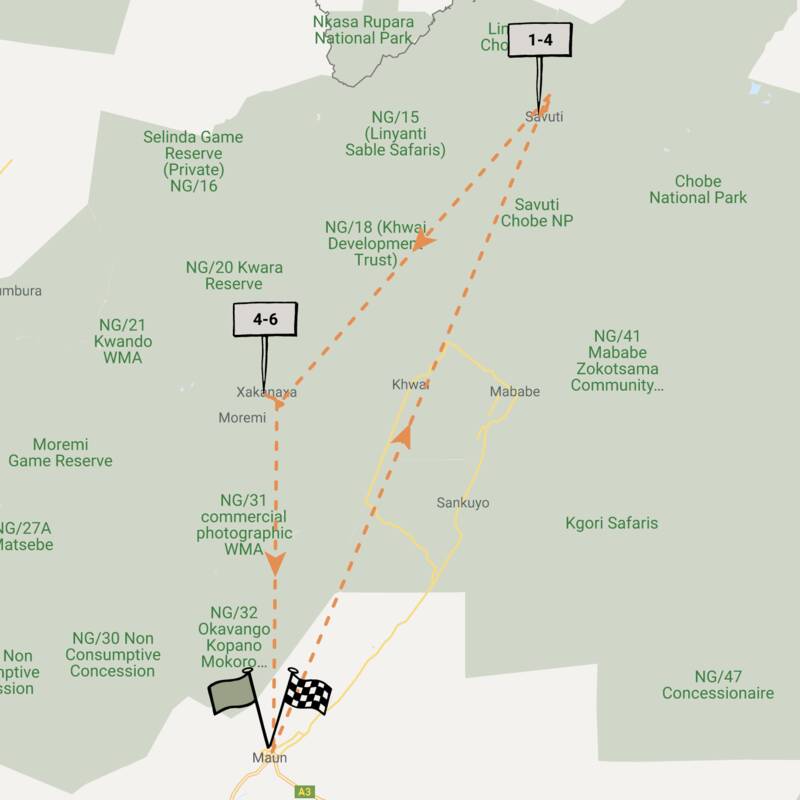
Wattled Crane Safari
5 days • 2 locations • 1 country
MAUN AIRPORT TO MAUN AIRPORT
A good-value Botswana safari staying at comfortable lodges in prime wildlife-viewing areas – Chobe National Park and the Moremi Reserve in the Okavango Delta.
Visiting Chobe, Moremi & Surrounds
US$6,120 - US$8,090 per person
Savute Safari Lodge: Our full report
Perched on the banks of the Savuti Channel within Chobe National Park, Savute Safari Lodge offers a good ...
... location from which to explore the nearby Savuti Marshes. Comfortable without being overly luxurious, the camp enjoys views over the Channel and its two pumped waterholes, which – especially during the dry season – attract vast numbers of elephant to drink in the afternoons and evenings.
Savute Safari Lodge, located to the north of Chobe’s Savute or Savuti Marsh, and one of the original safari camps in this region (it used to be called Lloyd's Camp), the lodge has undergone several transformations over the years, and now stylish and comfortable accommodation for those wishing to explore the area.
Accommodation at Savute Safari Lodge consists of 12 thatched chalets, all raised up on stilts along the tree line on the banks of the channel. Each is large, with a shaded private deck and a couple of chairs at the front, perfect for escaping the heat of the day while keeping an eye on the waterhole for animals that come down for a drink. One family chalet features two bedrooms and two bathrooms.
Inside, the chalets are contemporary in design, with clean, crips lines, glass doors for those that prefer a more enclosed safari, but gauze sliding doors as an alternative for those who love to hear the resident hippos wander past feeding in the night. Bright and airy, and a comfortable place to relax in the afternoon between activities, you'll find large twin beds, or a double, under a mosquito net set on runners for ease to pull around the bed and the bedside tables, which house charging points and a reading lamp.
The chalets are large enough to have their own separate seating area with a coffee table, plus ample storage space for clothes and luggage, a vanity unit and desk, and a coffee- and tea-making station.
The fully tiled en-suite bathroom is reached through a doorway off the main bedroom. Complimentary toiletries are set alongside a washbasin beneath a large mirror, and there's an open, walk-in shower.
At the heart of the lodge, the main area of Savute Safari Lodge houses an expansive lounge, library and bar, all comfortable spots in which to relax during the day or discuss sightings in the evening over a few drinks and some nibbles.
The main lodge areas are set on multi-level decks above the river, with a large alfresco dining area, a perfect spot to observe the elephants that come down in the evenings to drink. Main meals – afternoon tea and dinner - are either taken here, where there is a roof covering, although in really bad or cold weather meals are taken up in the main dining area. On our previous visits we have found it a remarkable experience to sit under the stars, enjoying some great food and a glass of wine, while only 20-or-so metres away elephants jostled for space along the water's edge.
There is also a firepit by the dining area where on one stay in May we had a very enjoyable evening after supper, well hosted by the superb staff and management team (and a couple of very entertaining guests!). In fact, part of the charm of Savute Safari Lodge stemmed from the friendly team of staff who clearly loved working at Savute Safari Lodge and with each other, and made our experience enjoyable and fun.
Overlooking the channel is a swimming pool with a number of deckchairs around the water's edge; very welcoming when it gets hot! During a previous stay, a couple celebrating their honeymoon were treated to a lovely private candlelit dinner in a small clearing on the pool's deck.
Activities at Savute Safari Lodge revolve around 4WD game drives in open vehicles, for the most part on and around the Savuti Marsh and along the Savuti Channel. Note, however, that as the camp is situated within Chobe National Park, night drives, walking and driving off-road are not allowed, in accordance with national park rules.
During the dry season, from July to October, huge herds of elephant and other plains game make Savuti their home, and at this time of year we have been treated to spectacular game viewing on the Savuti Marsh. This proved to be the case on a visit one October, when our sightings included two packs of wild dog, leopard, a pride of seven lions including a massive male, giraffe, spotted hyena and ostrich.
We've also had a contrasting experience during a May visit, with just a handful of elephants visiting the channel beneath the lodge in the evening, rather than the hundreds you would expect during the peak season, and general plains game was a little thinner on the ground too – though we had a gorgeous, if brief, sighting of a large brown hyena. That said, our guide was superb, sharing an intimate knowledge of the area and the geological forces surrounding the history of the Savuti Channel's flow. He managed to track down a very elusive leopard, as well as some impressively big male lions and on a separate occasion a small lion pride and cubs. Sundowners out on the huge sand ridge that runs across the landscape, watching the sun set and listening to lions roar across the plains, was a particular highlight.
Scenically, the Savuti area varies greatly from the Delta and makes a fabulous contrast for those on a northern Botswana safari. It is much more open, too, so that the inability to drive off-road is less of an impediment. However, the Savuti Marsh area does tend to be a little busier than the private reserves, especially in high season, and as a result you can expect to share game sightings with more vehicles.
One of the unique aspects of the Savuti area that we like is the presence of the Gubatsaa Hills. Such geographical features in overwhelmingly flat Botswana are complete rarities, and it's possible to take photos of elephant, giraffe, and other big game with these hills in the background – an unmistakable image of Savuti!
Activities
4WD Safari
Birdwatching
Helicopter
Private activities
Families & children
- Attitude towards children
- Savute Safari Lodge does not accept children under six. Families with children aged 6–11 will be required to book private activities at an additional cost. Children aged 6–15 must share accommodation with a parent.
- Property’s age restrictions
- The minimum age is six years old.
- Special activities & services
- Some staff members at Savute Safari Lodge are trained to work with children – though do note this is not an official qualification. Should parents wish, they can enjoy a game drive by themselves with the peace of mind that their children are having fun back at the lodge.
- Equipment
- None
- Generally recommended for children
- Savute Safari Lodge has a lovely friendly laid-back feel, so could be a great option for those travelling with teenagers, provided that they have a genuine interest in wildlife and nature.
- Notes
- The camp has a thin electric wire running around its perimeter but this does little to keep anything smaller than an elephant out and so large game passes through frequently. Therefore children will need to be constantly and closely supervised by a parent or guardian.
Food & drink
- Usual board basis
- Full Board & Activities
- Food quality
- On our last stay at Savute Safari Lodge, we found the food to be of very good quality and observed that all guests were enjoying the cuisine. With advance notice, the camp can cater for vegetarians and other dietary requirements.
A light breakfast is served before heading out on the morning activities, generally cereal, yoghurt, toast, cereal, pancakes and fresh fruit, alongside tea, coffee and a selection of fruit juices. On one visit, we especially liked the crêpes with fresh honey, while pots of warming porridge with fruit compote was a treat on a cold winter morning on another visit.
Brunch is served upon returning from the morning activities. We didn’t have the chance to have brunch on our most recent visit, but on a previous stay have enjoyed a Caprese salad with fresh mozzarella, sliced tomato, and a delicious, rich pesto sauce, along with very tasty slices of roast beef with a light gravy. There was also a beetroot salad, and a cheese and potato quiche as an alternative to the beef.
For afternoon tea, just before the start of the afternoon activity, you can expect a savoury and a sweet offering. We were offered mini vegetable kebabs and sweet chilli sauce, and carrot cakes with cream cheese icingas well as homemade lemonade and iced tea and coffee.
Dinner, usually a buffet, is served upon your return from the afternoon activity. We started with camembert filo pastry tarts, then were offered both roasted lamb and mint sauce, or a deliciously tasty bream grilled in lemon butter, served with brown rice or mashed potato, roasted carrots, a mix of green vegetables. and creamed spinach. Dessert was a fresh fruit salad, with crisp meringue bites. - Dining style
- Group Meals
- Dining locations
- Indoor and Outdoor Dining
- Further dining info, including room service
- Meals are taken communally, although due to the fairly large size of the lodge, guests can sometimes be split over several tables.
- Drinks included
- Bottled water, soft drinks, local beers and spirits and a limited selection of (usually) South African red and white wines are included. Champagne and imported wines and spirits will cost extra and may need to be requested in advance.
Each chalet is provided with glasses and a flask of drinking water, which is replenished daily. We don’t recommend that travellers drink from the tap. Guests also receive a tin water bottle that they can refill from dispensers in the main area with drinkable water filtered by reverse osmosis.
Our travellers’ wildlife sightings from Savute Safari Lodge
Since mid-2018, many of our travellers who stayed at Savute Safari Lodge have kindly recorded their wildlife sightings and shared them with us. The results are below. Click an animal to see more, and here to see more on our methodology.

100% success

100% success

100% success

100% success

100% success

100% success

100% success

67% success

67% success

50% success

33% success

33% success

0% success

0% success

0% success

0% success

0% success

0% success
Getting there
- Location
- Chobe National Park, Botswana
- Ideal length of stay
- A stay of two or three nights at Savute Safari Lodge would be ideal.
- Directions
- Savute Safari Lodge is normally reached by a short light-aircraft flight from either Maun or Kasane, or from one of the other safari camps in northern Botswana. A game-drive transfer from the airstrip via the park gate takes about 20 minutes.
- Accessible by
- Fly-and-Transfer
Special interests
- Family safaris
- With a swimming pool and a large family chalet with 2 ensuite bedrooms Savute Safari Lodge is a great stop on a family safari in Botswana.
- See ideas for Family safaris in Botswana
- Wildlife safaris
- Savute Safari Lodge enjoys a prime location directly on the Savute Channel, which is absolutely pumping with elephant, giraffe, hyena and other game during the dry season – ideal for a wildlife safari in Botswana. Wildlife also concentrates at the camp’s two pumped waterholes.
- See ideas for Wildlife safaris in Botswana
Communications
- Power supply notes
- The camp runs on solar power, though there is a back-up generator if needed. Each chalet has multiple charging points.
- Communications
- WiFi is provided in the guest rooms. Savute Safari Lodge is in constant two-way radio contact with the Maun Operations Office through whom important messages can be relayed.
- TV & radio
- None
- Water supply
- Borehole
- Water supply notes
- All rooms have plumbed hot and cold running water for showers as well as flush toilets.
Health & safety
- Malarial protection recommended
- Yes
- Medical care
- There are trained first-aiders on site, and for serious incidents there's a medical air-evacuation system in place. Please note that it is only possible to fly out of camp during daylight hours as the bush airstrips do not have any lighting at night.
- Dangerous animals
- High Risk
- Security measures
- Guests are escorted to and from their rooms after dark as dangerous wildlife is known to wander through the camp. A thorough safety briefing is given on arrival. A 'fog-horn' is provided in each tent to summon help in case of emergency.
- Fire safety
- There are fire extinguishers around camp and fire assembly points are identified to guests on induction to the camp when they first arrive.
Useful info
- Disabled access
- Not Possible
- Laundry facilities
- A full, complimentary laundry service is included at Savute Safari Lodge. Laundry is machine washed and air-dried.
- Money
- There are no currency-exchange facilities at the lodge. There is a small safe in each room, which can comfortably fit travel documents and wallets.
- Accepted payment on location
- Payment can be made via MasterCard or Visa, or cash, in South African rand, GB sterling, US dollars, euros and Botswana pula is accepted.
Plan and book your trip with Expert Africa
All of our trips are tailor-made, so we'll always adapt them to suit you. Talk to an Expert and let us plan and arrange your perfect trip.

Talk to an Expert
Call or email us now! We’ll match you with the Specialist in our team who is best suited to help you. Then together we can start planning your trip.

Set up your itinerary
Based on our experience and your ideas, your specialist will create a detailed, costed itinerary. We’ll refine it together, until we have a trip that you’re perfectly happy with.

Prepare for your trip
The same Specialist will make the seamless arrangements for your trip, send you detailed travel documents, and be available to answer any questions before you depart.

Travel with peace of mind
After you set off, you’ll be cared for by our partners in Africa, most of whom have worked with Expert Africa for decades. And if you ever need us urgently, we’re available 24/7.

When you return
We love to learn about your trip, and so will always be grateful if you’ve the time to give feedback to your Specialist when you return.
Savute Safari Lodge's location
Look closer at the environment and surroundings of Savute Safari Lodge.
Excursions from Savute Safari Lodge
Optional extra day-trips and excursions possible whilst you're staying at Savute Safari Lodge. Talk to us: these are usually best arranged before you go.
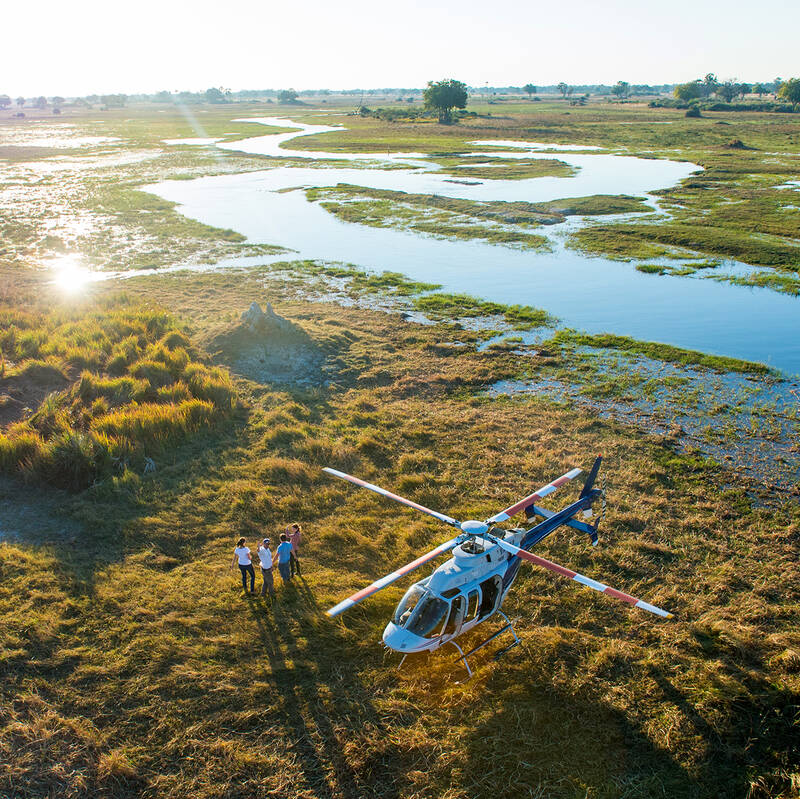
Helicopter Flight - Botswana
Various: from 30 minutes to half a day.
Low-flying, agile and offering superb views, helicopters are an ideal way to move around the Okavango Delta.You can use them instead of fixed-wing inter-lodge transfers or as an addition to other wildlife watching activities, and of course, helicopters can hover to allow that perfect pic, whereas fixed-wings can’t.
More about Helicopter FlightOther lodges in Chobe National Park
Alternative places to stay in this same area.
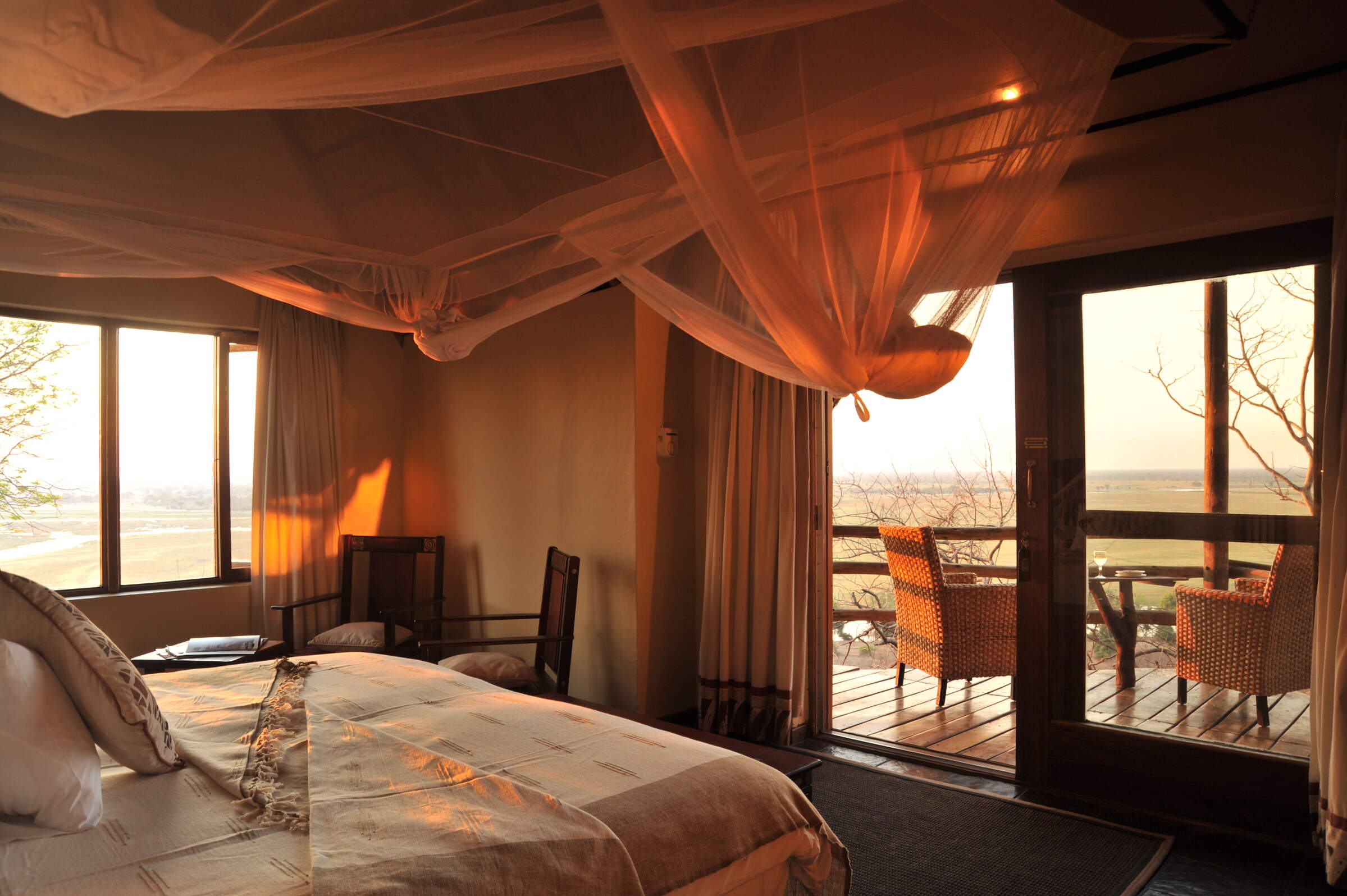
Muchenje Safari Lodge
One of our favourites in the area, Muchenje is a small, welcoming lodge at the quieter, western end of the Chobe Riverfront.
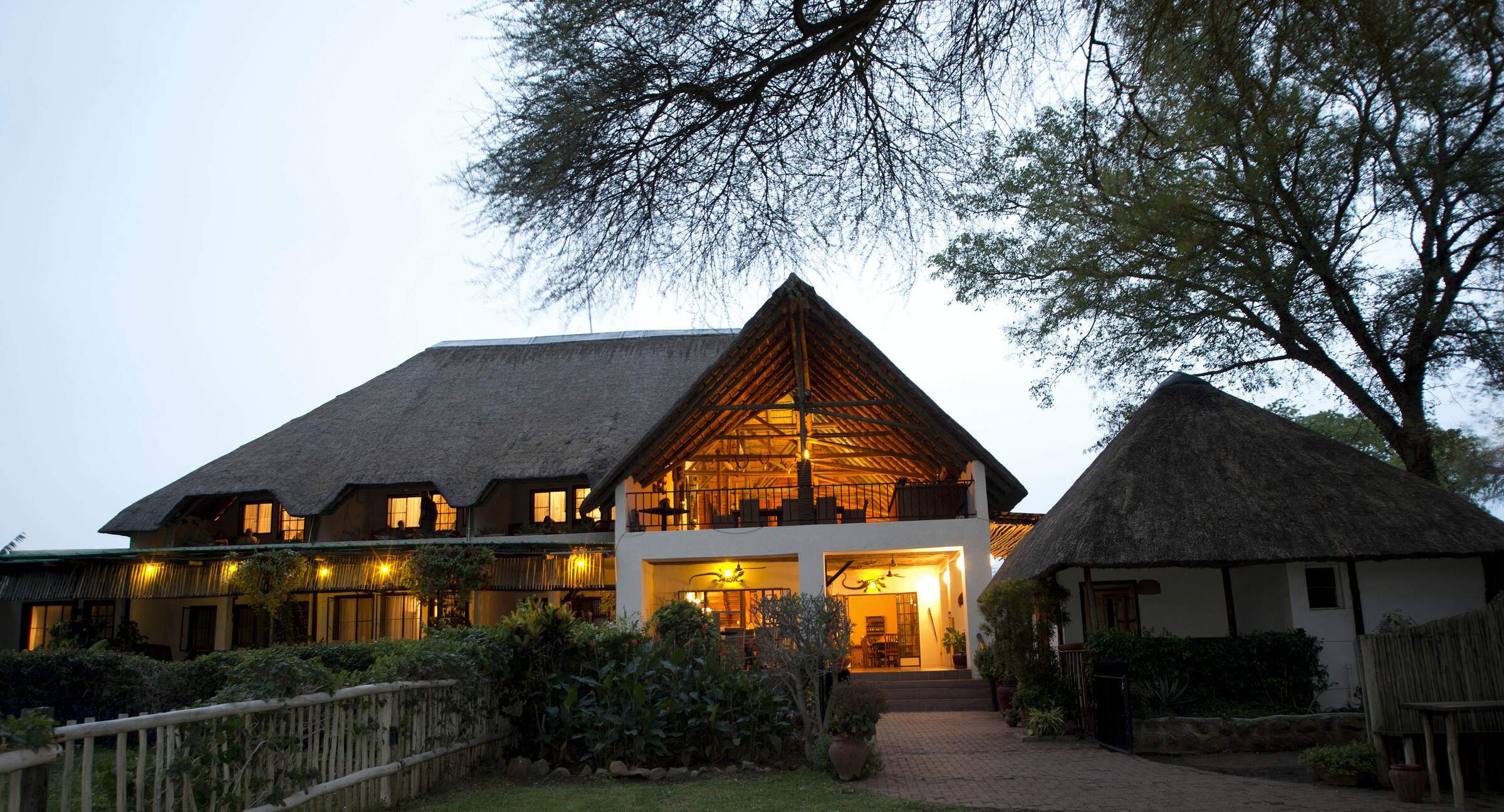
Chobe River Lodge
Overlooking the Chobe River, the intimate Chobe River Lodge is a haven of tranquillity away from the bustle of Kasane.
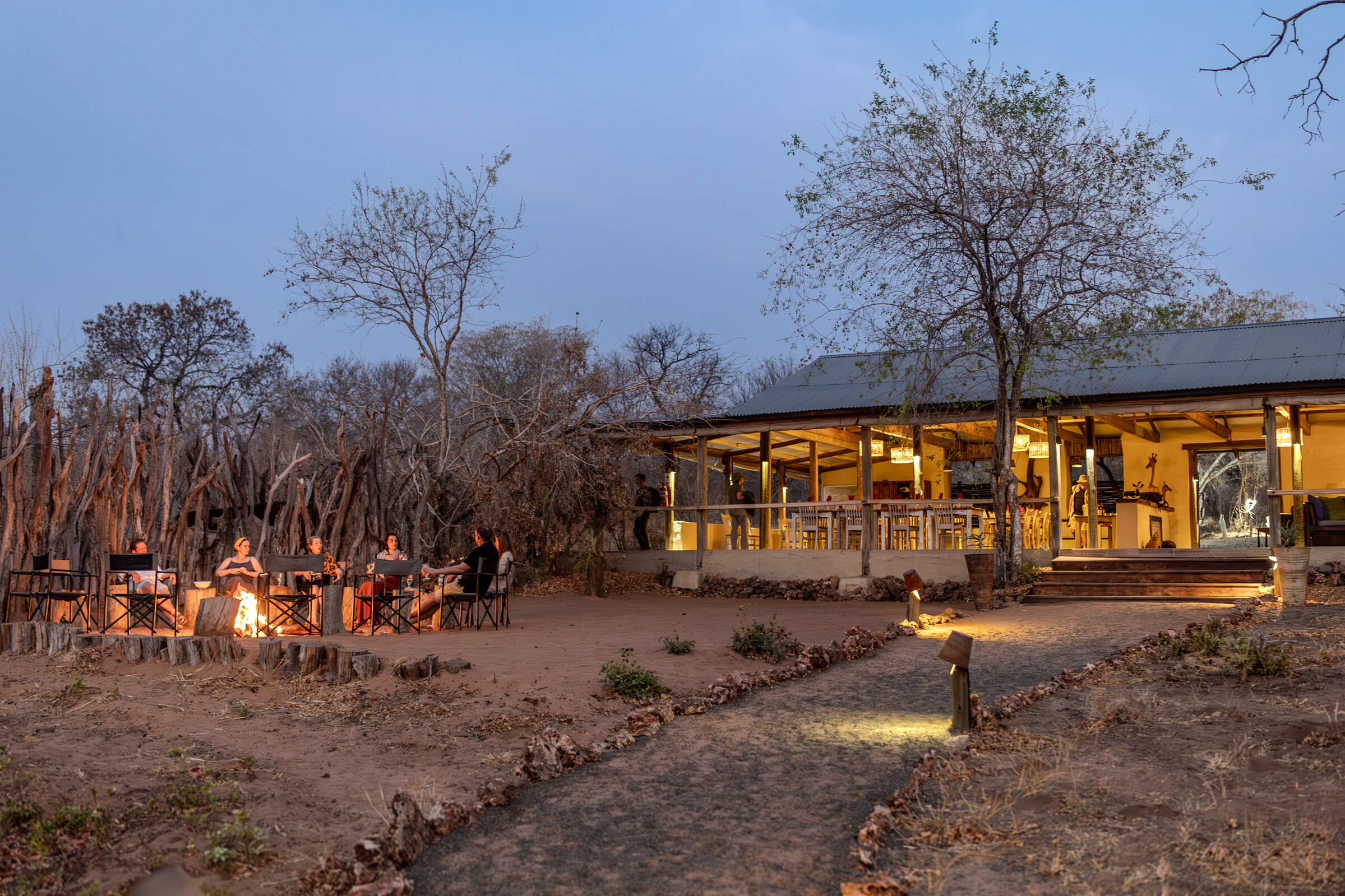
Chobe Elephant Camp
Located in one of our favorite areas of Chobe National Park, Chobe Elephant Camp is a simple but well-appointed camp with a strong bush feel.
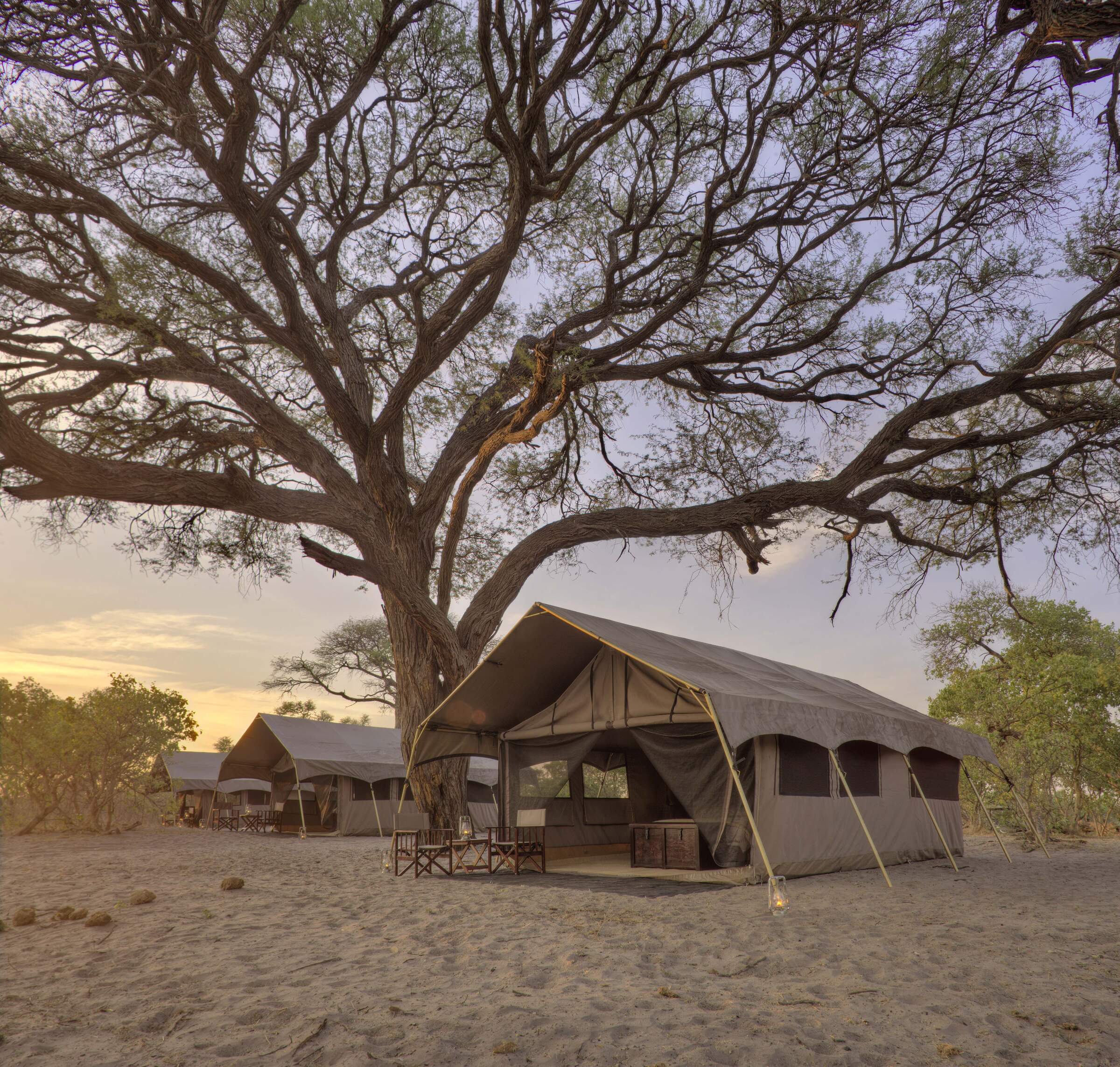
Savute Under Canvas
A mobile camp with the comforts of a semi-permanent tented camp, Savute Under Canvas offers guided game drives within the Savuti region of Chobe National Park.
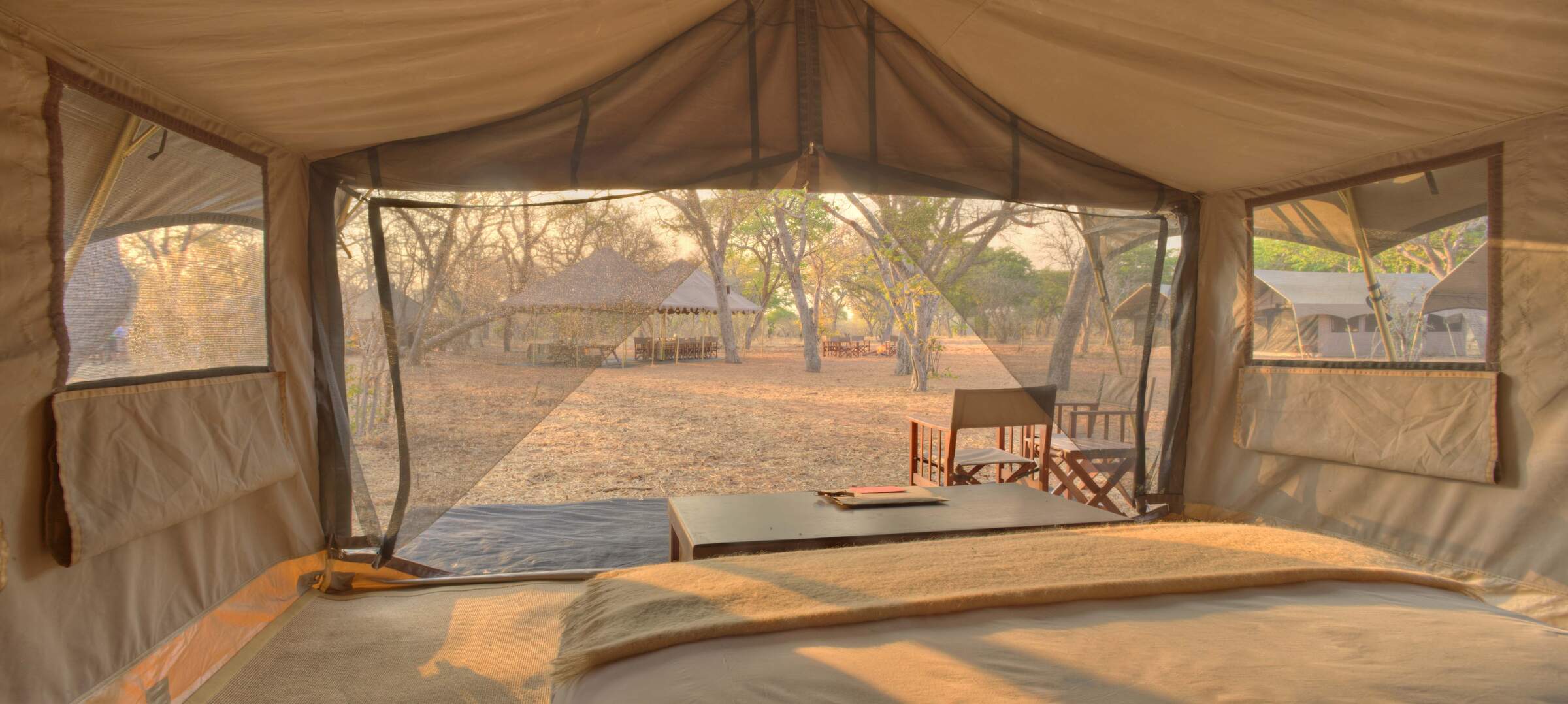
Chobe Under Canvas
This is a typical location for Chobe under Canvas, a small, semi-permanent camp in the Chobe Riverfront area that offers good value for money and high standards of care.
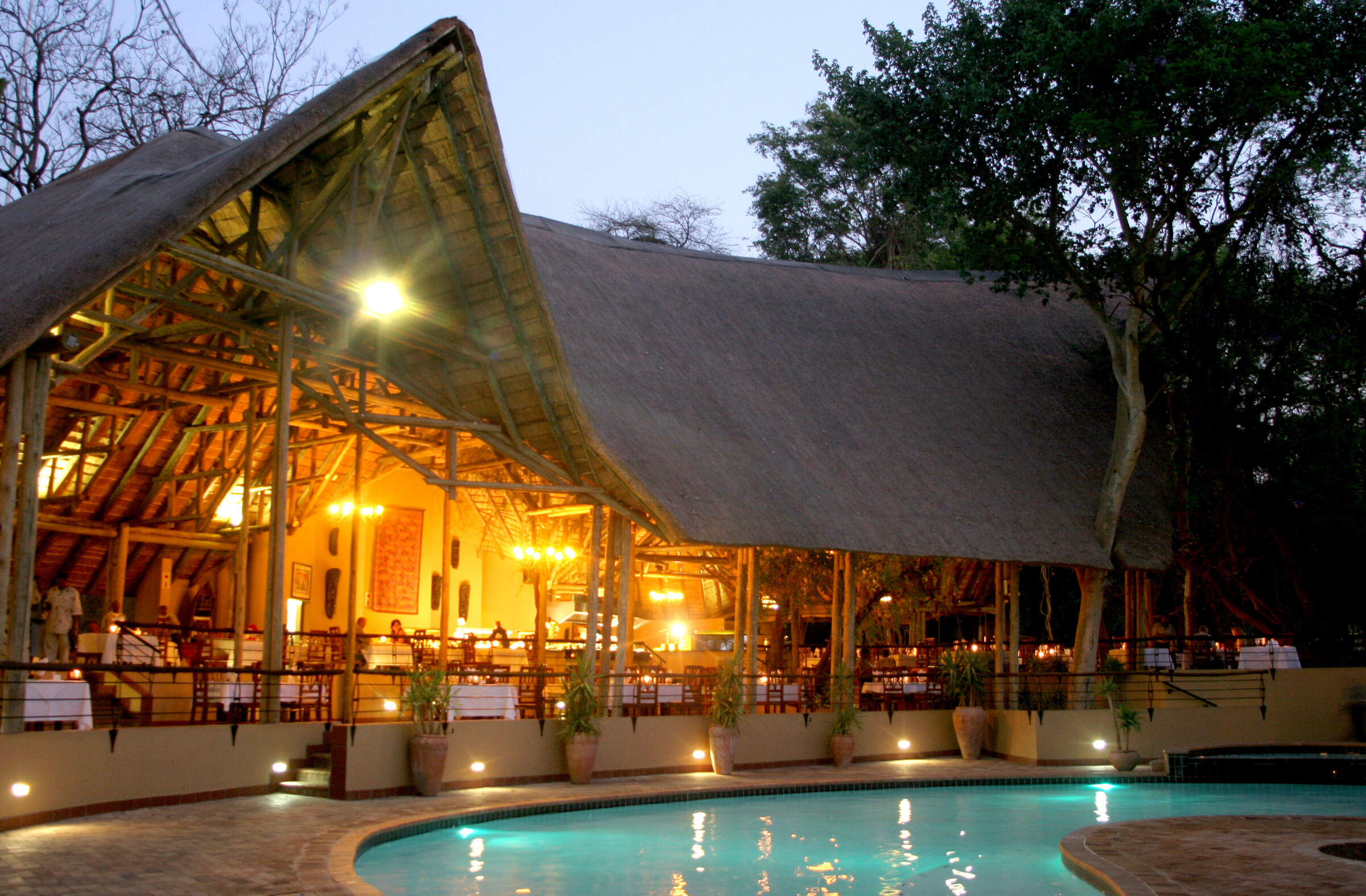
Chobe Safari Lodge
Chobe Safari Lodge is a good value, hotel-style lodge in the heart of Kasane offering game drives, boat cruises and fishing trips.
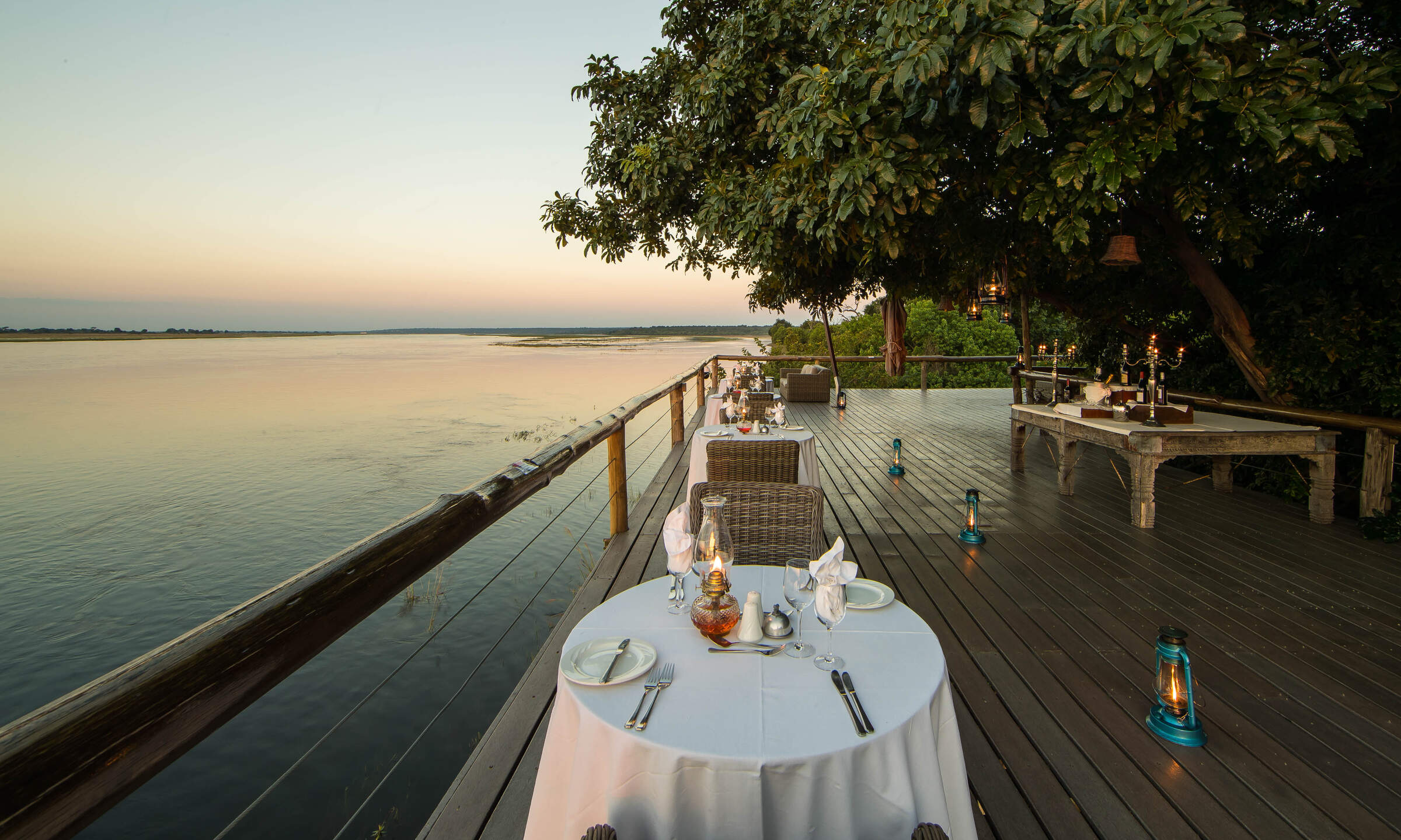
Chobe Game Lodge
Chobe Game Lodge occupies an enviable riverfront location within Chobe National Park and boasts well-earned 'eco' credentials, as well as an excellent all-female guiding team.
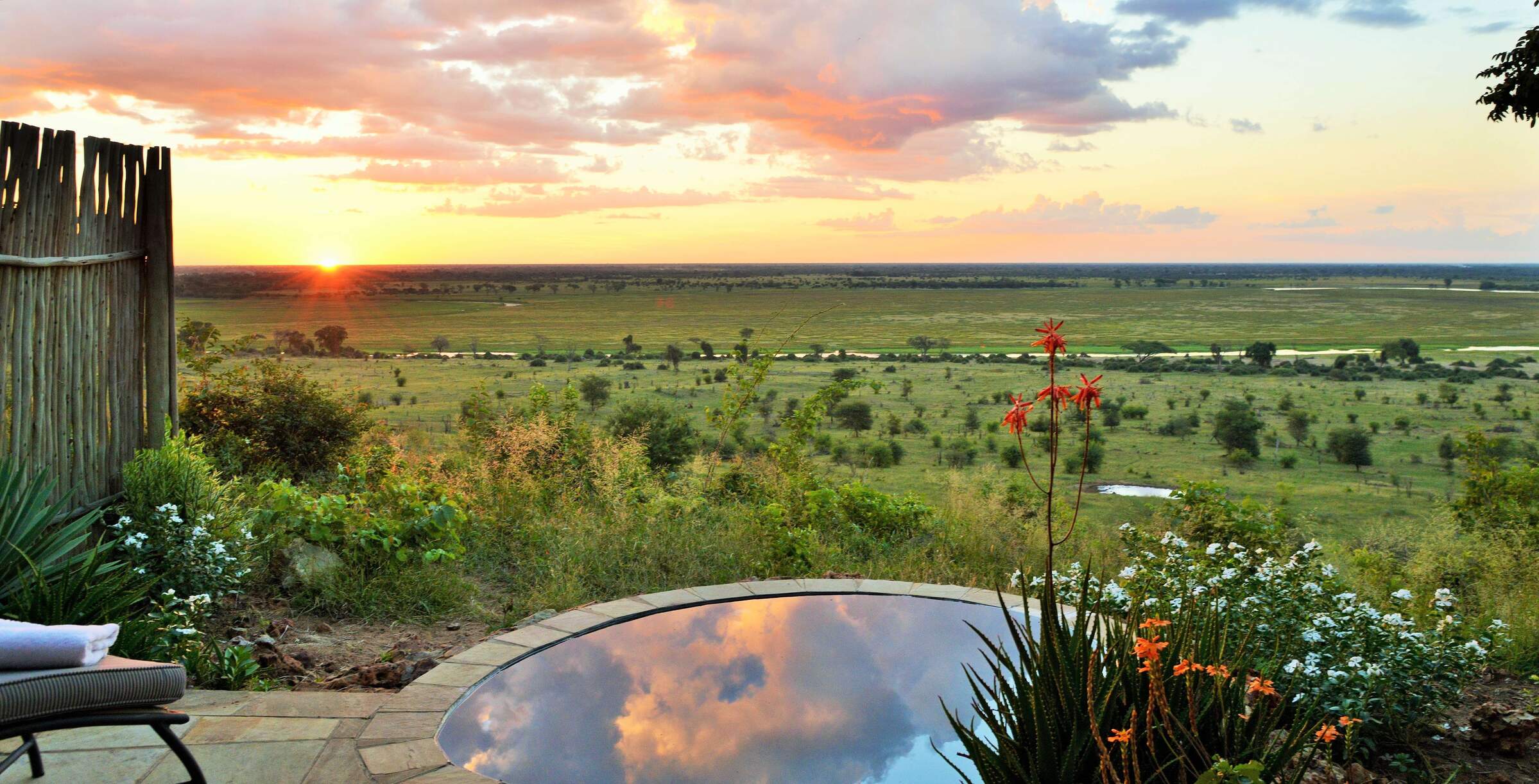
Ngoma Safari Lodge
With sweeping views across the floodplains of the Chobe River, Ngoma offers superb food and flexible safari activities.
Closed for refurbishment 5 Jan - 28 March 2026
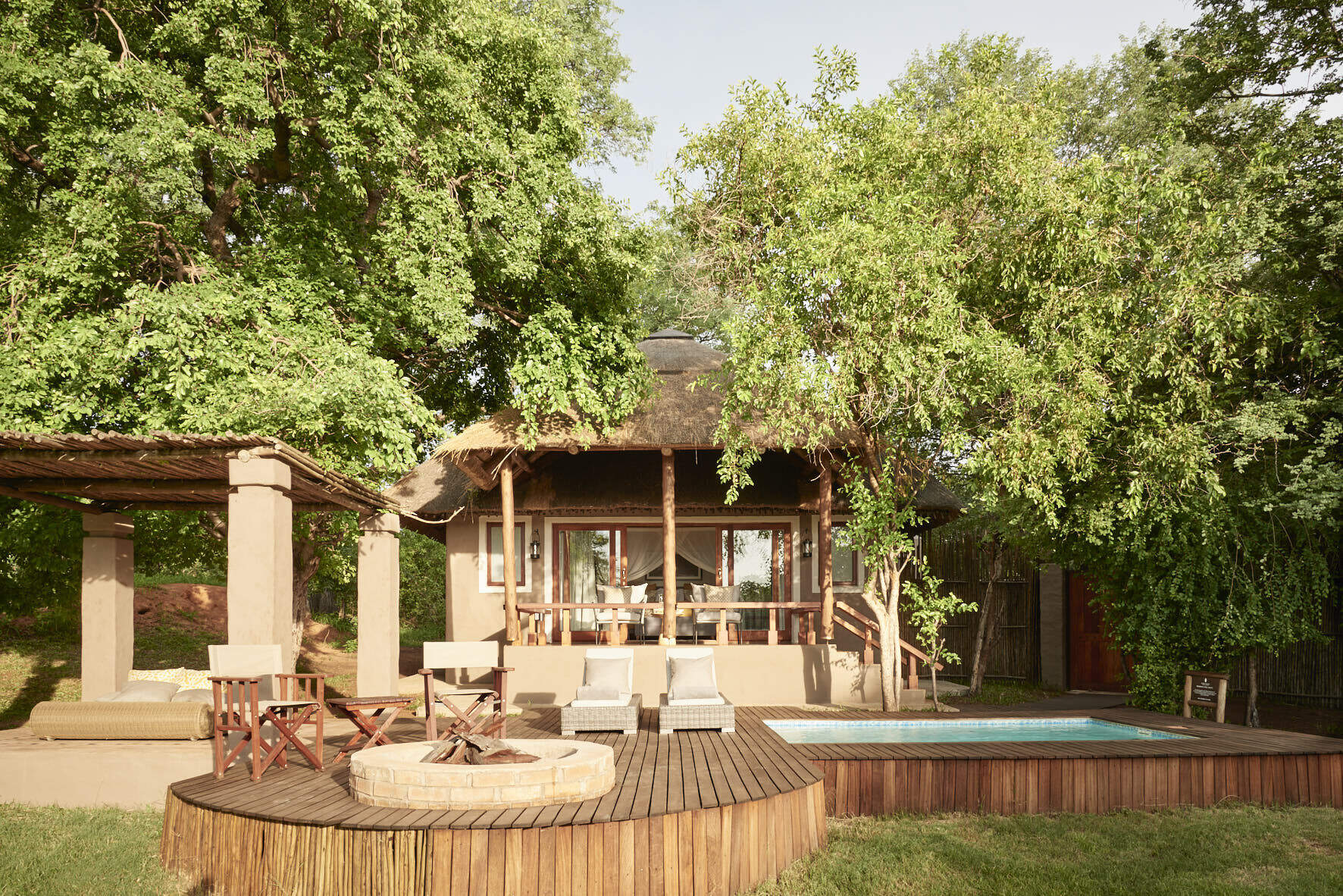
Chobe Chilwero
On the periphery of Chobe National Park, Chobe Chilwero offers luxurious surroundings and excellent food, which complement superb game viewing on game drives and boat trips.
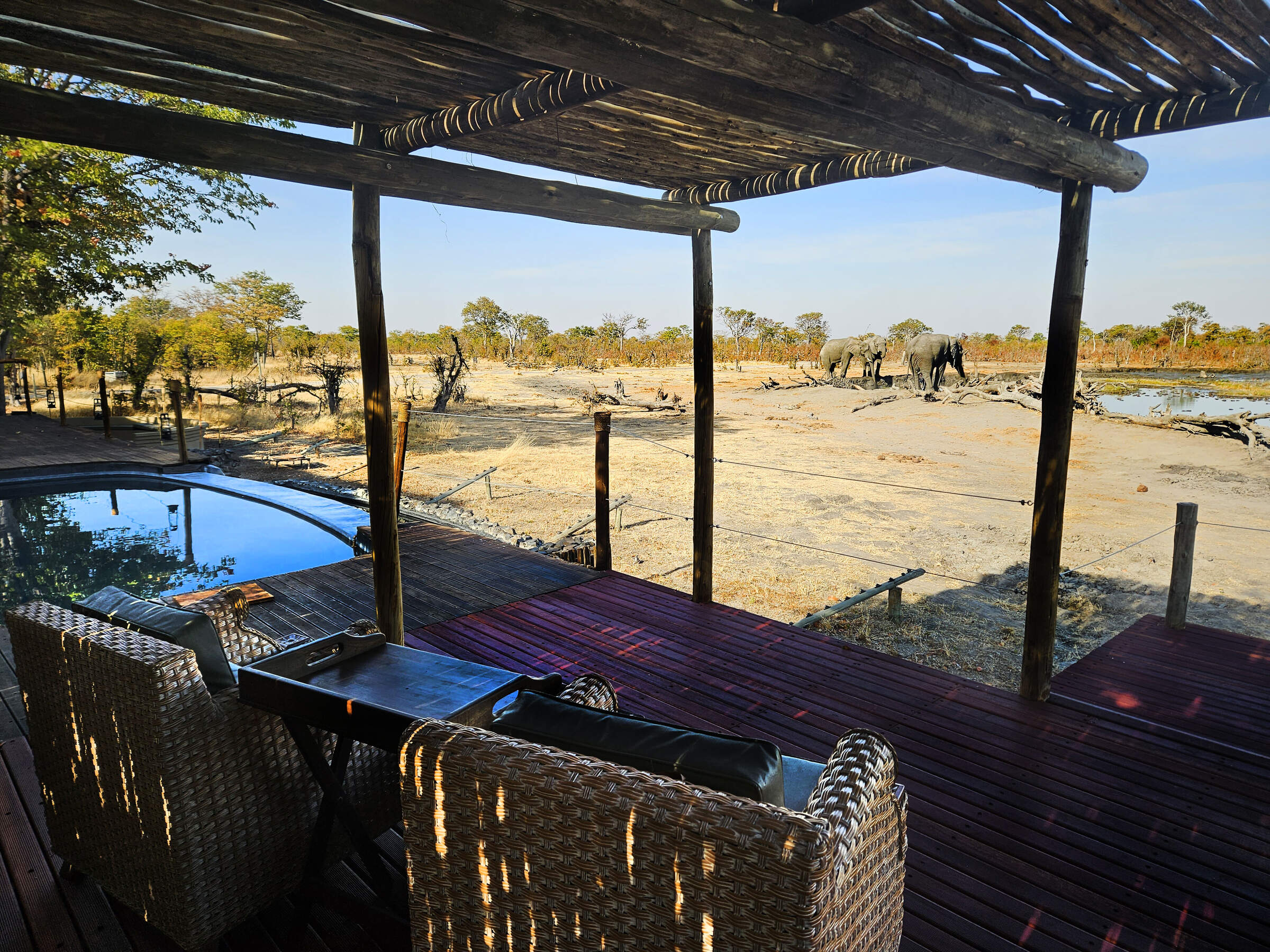
Camp Kuzuma
Camp Kuzuma sits in the Kazuma Forest Reserve and is an excellent place to see elephant in particular. Away from the busier riverfront area of Chobe National Park this camp offers a luxurious base form which to explore this less visited region of northern Botswana.
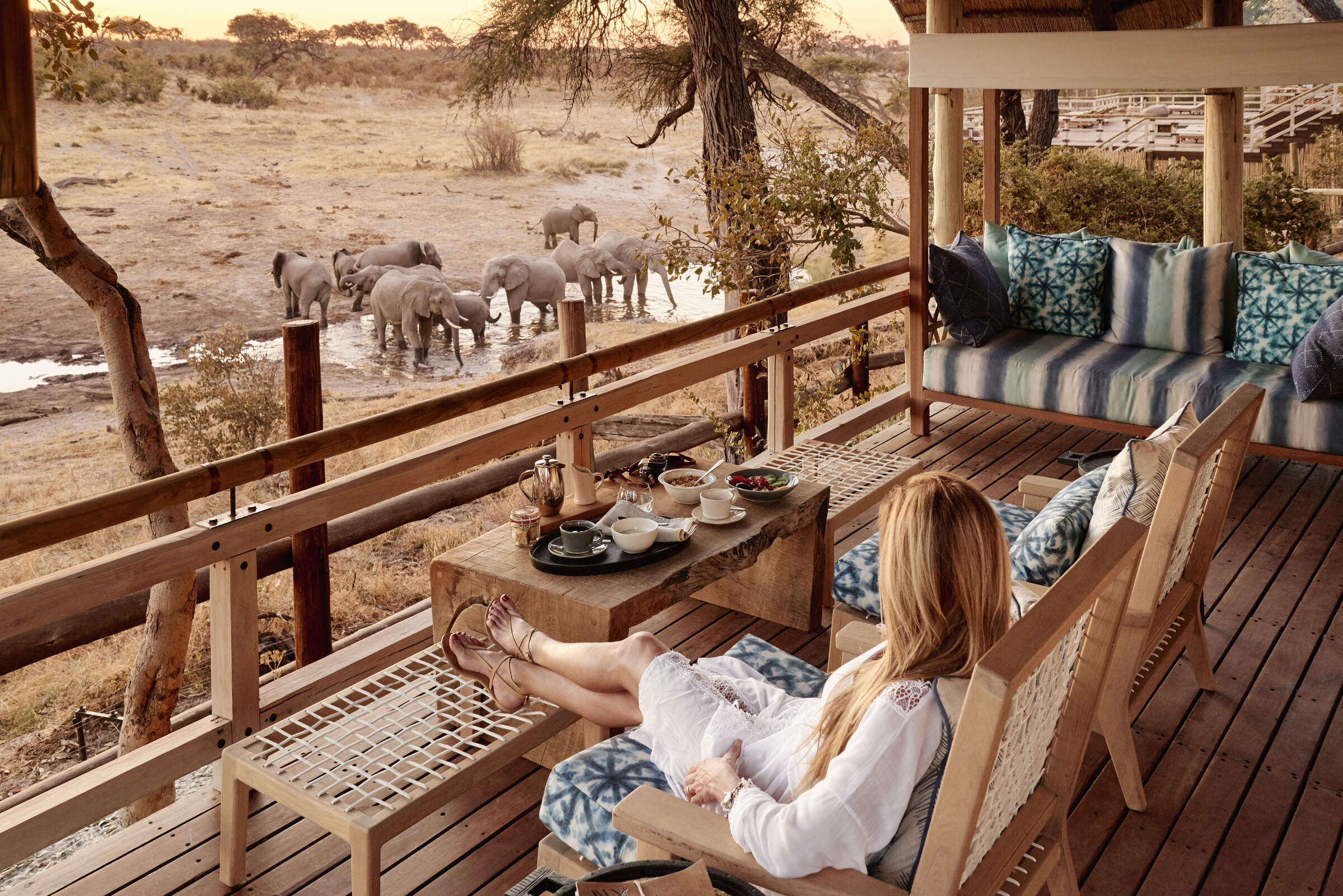
Savute Elephant Lodge
Savute Elephant Lodge is a luxurious camp on the banks of the now flowing Savuti Channel. This is a classic big-game area, although its location within Chobe National Park does limit the activities which are possible here.
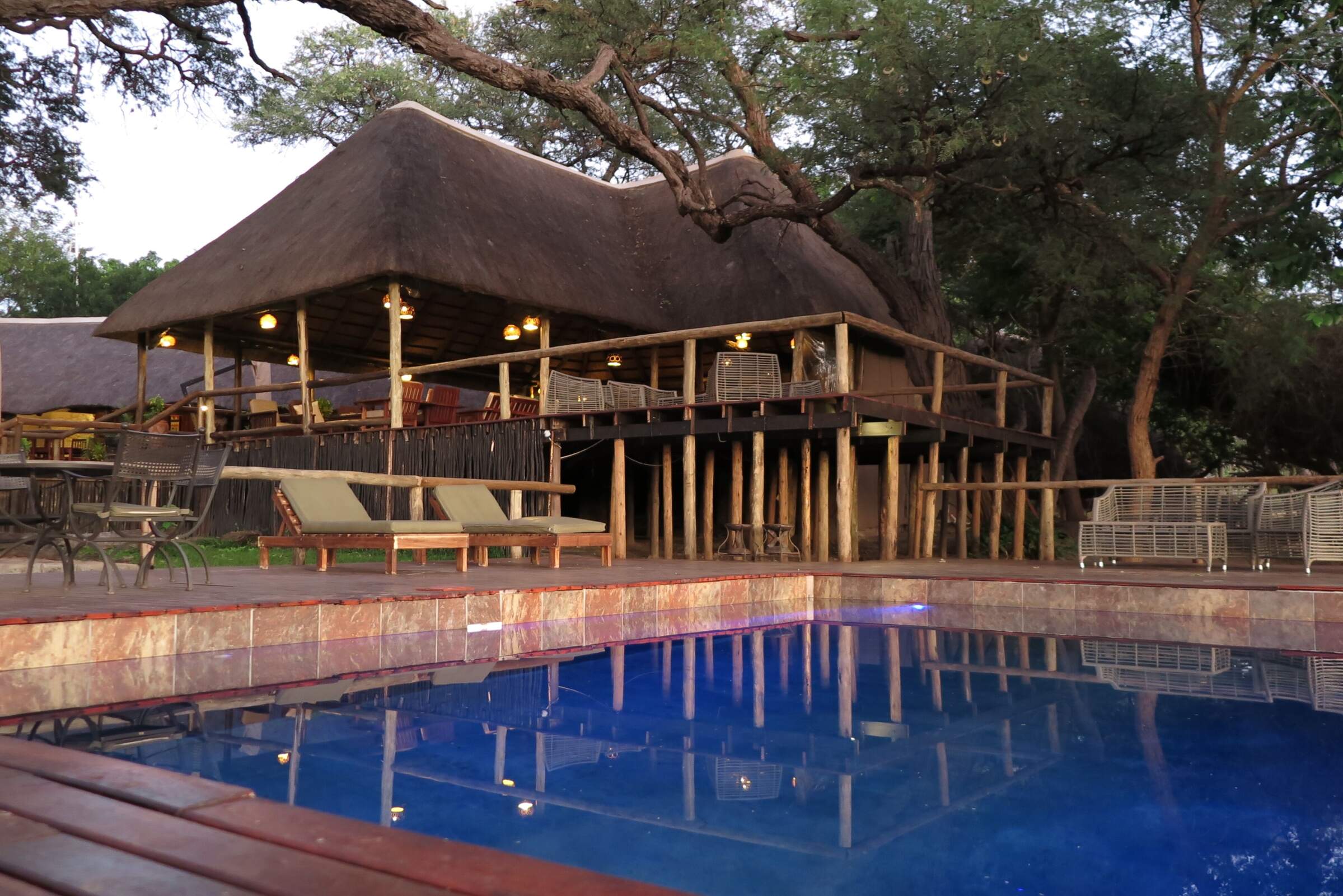
Elephant Valley Lodge
Elephant Valley Lodge is a lovely camp in a beautiful setting – sit in its hide and watch the wildlife come to drink at the waterhole. Activities focus on boating and drives in Chobe which - although very busy, and a long drive from the lodge – is very rich in wildlife.
When to go to Chobe National Park
Our month by month guide: What it's like to visit Savute Safari Lodge in Chobe National Park
Jan
Feb
Mar
Apr
May
Jun
Jul
Aug
Sep
Oct
Nov
Dec
Chobe National Park in January
January marks the peak of the rainy season in Chobe National Park. Evening rains are typically brief but heavy, often accompanied by thunderstorms. While temperatures remain high, they are slightly cooler compared to earlier months. Wildlife tends to be more dispersed, making it harder to spot animals. Big game densities near the Chobe Riverfront are relatively low, but some resident species, like giraffes, are accustomed to vehicles and can appear so relaxed that they seem almost tame.
The Savuti Marsh becomes lush and green, attracting herbivores. Migratory birds abound throughout the park, with the Linyanti Marsh being particularly rich in birdlife during this period. January is an excellent time for visitors interested in lush landscapes and diverse birdlife. Lower rates at many lodges make this a good time to visit on a more moderate budget.
- Warm temperatures with occasional thunderstorms
- Birdlife at its most spectacular in Chobe
- Big game dispersed across the park
- Seek most wildlife away from the river
- Good availability and rates in Chobe’s lodges and camps
Our view
A good time to visit, with pros & cons
Weather in January
Chobe National Park in February
February in Chobe National Park is similar to January, with heavy rains most days, often towards evening. The landscape is green and alive, with insects and smaller animals more easily seen. Many birds and animals are raising their young, especially in the Linyanti and Savuti areas, making for lovely family group sightings. The Chobe River swells, creating a spectacular landscape and attracting diverse wildlife. However, the rains create pools and waterholes in the bush, which combined with thicker vegetation makes it harder to spot larger animals.
The Chobe Riverfront area still offers a good wildlife experience as although much big game has moved away, the animals that remain are often more relaxed. Boat cruises on the Chobe River provide excellent opportunities to observe wildlife from a different perspective. Visitor numbers remain low, with good rates and more availability in camps and lodges.
- Warm with occasional thunderstorms in Chobe
- Vegetation running riot; smaller wildlife thriving
- Many animals with young in the park
- Big game dispersed throughout Chobe
- Low visitor numbers, good camp availability
Our view
This is not a great time to visit
Weather in February
Chobe National Park in March
March typically marks the end of the main rainy season in Chobe National Park, with showers gradually tapering off. Many days are characterised by clear skies, intense sunshine, and rising temperatures. Short afternoon thunderstorms may still occur, while the park's landscape remains lush and vibrant. During this time, many birds and animals complete the process of raising their young. The Savuti Marsh area becomes particularly fascinating as predators exploit the vulnerability of the young and weaker prey.
The Chobe River levels start to stabilise, offering excellent boat safari opportunities. March can also be a good time to explore the Linyanti area, where many animals congregate as other water sources begin to dry up. With fewer visitors in most areas, rates are still be relatively low at lodges and safari camps.
- Variable weather, rains tailing off in Chobe
- Occasional small thunderstorms in the park
- Many animals finish raising young in Chobe
- Birdlife still spectacular along Chobe River
- Few tourists, often lower rates in lodges
Our view
A good time to visit, with pros & cons
Weather in March
Chobe National Park in April
During April, rains in Chobe National Park have usually stopped, though there may still be the odd afternoon downpour. This results in clear skies and a lovely green, lush landscape. Night-time temperatures start to drop, and are especially noticeable in the Savuti area. The Chobe Riverfront begins to flourish at this time, with the numbers of elephants and other wildlife gradually increasing along the river.
The Savuti region is a particular favourite during this time, with good predator-prey interactions on display. April marks the beginning of the shoulder season for many camps, so rates are on the rise but still relatively moderate. This is an excellent time for photographic safaris, as the air is clear and the landscape still green.
- Cooler evenings, occasional showers in Chobe
- Northern Chobe lush and green
- Good predator-prey interaction observable
- Savuti area best for wildlife viewing
- Popular shoulder season, relatively low rates
Our view
A good time to visit, with pros & cons
Weather in April
Chobe National Park in May
May is a very popular month to visit Chobe National Park, often the last month of the shoulder season before camp rates hit their peak. While there is very little chance of rain, the annual floods from Angola start to make their way through the northern part of the park. With cooler temperatures in the morning and evening, predator activity tends to be higher, especially in the Savuti and Linyanti areas.
The Chobe Riverfront becomes busier with wildlife as water dries up elsewhere, making it an excellent time for boat cruises on the Chobe River, where close encounters with elephants and other wildlife are a real treat. Away from the water, game drives in the park's interior become more rewarding as vegetation thins out and sightings improve. May is a favourite time for many visitors, and camp bookings throughout Chobe are start to be snapped up quickly.
- Cool mornings and evenings, little rain in Chobe
- Game viewing beginning to improve
- Predator activity increasing in Savuti
- Last month of shoulder season for most camps
- Availability decreases throughout Chobe
Our view
A very good time to visit
Weather in May
Chobe National Park in June
June marks the real start of the dry season in Chobe National Park. Temperatures are cool in the mornings and evenings, occasionally reaching freezing at night, and rising to 25-30°C/77-86°F during the day. This brings a certain clarity to the air and clear blue skies, making it a favourite month for serious photographers. Surface water and smaller natural waterholes are now drying up, leading wildlife to congregate around the remaining large water sources, including the Chobe River.
Visibility improves as the grass dies back, making game viewing very good throughout the park. The Savuti Channel and Linyanti areas see increased predator activity. June is an excellent time for both land and water-based safaris in Chobe, so not surprisingly, camp availability becomes scarce and rates climb.
- Warm days, cold nights in Chobe National Park
- Excellent conditions for wildlife photography
- Animals congregating at Chobe River
- Grasses dying back, improving visibility
- Peak season begins, rates increase
Our view
Fantastic: the very best time to visit
Weather in June
Chobe National Park in July
July in Chobe National Park offers cold evenings and mornings, combined with great daytime game viewing; this makes it one of the most popular times to visit. Vegetation is really thinning out, making game ever-easier to spot, with the few remaining waterholes attracting large congregations of wildlife species. The Chobe Riverfront is increasingly rewarding, with large herds of elephants and buffalo congregating along the river.
However, this area is now becoming busy with visitors. Game viewing is good in the Savuti area too, with frequent predator sightings. The Linyanti Marsh attracts diverse wildlife, including rare species like wild dogs. Camps are now very much into the peak season and tend to be full. Advance booking is essential for popular lodges and camps.
- Comfortable days, cold nights in Chobe
- Excellent game viewing as vegetation dies back
- Chobe Riverfront becomes busy with wildlife
- Private concessions offer exclusive experiences
- Peak season, higher rates in lodges
Our view
Fantastic: the very best time to visit
Weather in July
Chobe National Park in August
August is a favourite time for visiting Chobe National Park, as it aligns with the European and North American summer holidays. Camps tend to fill up quickly, so booking well in advance is essential. Daytime temperatures are pleasantly warm, perfect for outdoor activities; nights can be chilly, but the clear, cloudless skies also provide stunning opportunities for stargazing.
Wildlife is now congregating around the remaining water sources, especially along the Chobe River, making it a fantastic time for game viewing. If the Savuti Channel is flowing, it becomes a magnet for a variety of wildlife. This is one of the prime months to witness the park’s iconic large elephant herds. A boat cruise on the Chobe River offers up-close views of wildlife, including hippos and crocodiles.
With crystal-clear skies and animals congregating near water, August is an excellent time for photography safaris.
- Dry, warm days and cool nights in Chobe
- Spectacular stargazing opportunities
- Fantastic wildlife watching along Chobe River
- Large elephant herds visible at waterholes
- Peak season, high rates and limited availability
Our view
Fantastic: the very best time to visit
Weather in August
Chobe National Park in September
September is another very popular month to visit Chobe National Park. Days are warming up, while nights remain refreshingly cool. With drier conditions, most of the greenery has faded from the landscape, and photographers may find the haze from dust or smoke challenging, but it sets the stage for breathtaking sunsets.
Game viewing in September is exceptional, with large herds of elephants and buffalo gathering in the Chobe region. The Savuti and Linyanti areas also offer excellent predator sightings, and migratory birds begin to return, adding vibrant flashes of colour and adding to the park’s biodiversity.
Water-based activities on the Chobe River, such as boat cruises, are particularly rewarding, offering close-up views of animals coming to drink. Accommodation in camps and lodges is in high demand, with rates remaining at a premium, so early bookings are essential.
- Warmer days, cool nights in Chobe National Park
- One of the best months for wildlife viewing
- Large elephant and buffalo herds by Chobe River
- Hazy conditions create brilliant sunsets
- High season rates, many lodges and camps fully booked
Our view
Fantastic: the very best time to visit
Weather in September
Chobe National Park in October
October is typically the hottest and driest month in Chobe National Park. Towards the end of the month, the likelihood of rain increases, bringing a rise in humidity. The air is often dry and hazy, which can make photography more challenging, but the scarcity of water and vegetation leads to excellent opportunities for spotting big game. The Chobe Riverfront becomes a prime gathering spot for wildlife, particularly impressive herds of elephants.
In the Savuti area, predator-prey interactions are frequently observed around the remaining waterholes. Water levels are significantly lower by this time, meaning water-based activities like boating and fishing are limited to major tributaries. October is an ideal month for walking safaris, especially during the cooler morning hours. Despite the intense heat, it remains a prime time for wildlife enthusiasts eager to witness concentrated animal activity.
- Hot temperatures in Chobe, chance of late rain
- Excellent big game viewing opportunities
- Water activities limited as levels can be low
- Hazy conditions less ideal for photographers
- Final month of peak season in Chobe camps
Our view
Fantastic: the very best time to visit
Weather in October
Chobe National Park in November
November typically signals the end of the dry season in Chobe National Park. Rising temperatures bring increased humidity, leading to the arrival of the first rains. These showers are often brief but heavy, occurring in the late afternoon or at night, and can be quite dramatic. The rains provide a welcome relief, slightly cooling the temperatures and transforming the parched landscapes into vibrant shades of green.
As waterholes begin to replenish, wildlife starts to disperse across the park. Birdwatching is particularly rewarding this month, with the arrival of many migratory species, especially in the Linyanti Marsh area. The first half of November is a favourite among travellers, offering exceptional game viewing at more reasonable rates as Chobe enters its shoulder season.
- Hot days, increasing humidity in Chobe
- Heavy showers more likely as month progresses
- Wildlife watching good but less predictable
- Migrant birds arrive in Chobe National Park
- Shoulder season brings mid-range lodge rates
Our view
A good time to visit, with pros & cons
Weather in November
Chobe National Park in December
By December, the rains in Chobe National Park are underway, providing relief from the intense heat. While game viewing becomes more challenging as animals spread out, excellent sightings can still be enjoyed along the Chobe Riverfront and in the Savuti Marsh. The rains bring a vibrant transformation to the landscape, with fresh greenery creating beautiful scenery. This is also a fantastic time for bird enthusiasts, as numerous migratory species make their presence known.
The Linyanti area becomes especially lush, drawing a variety of wildlife. December is ideal for those eager to see newborn animals, as many species give birth during this time. Boat cruises on the Chobe River offer a refreshing way to observe wildlife and enjoy the scenery. With low-season rates at many camps, December is an appealing option for budget-conscious travellers looking to experience the park’s beauty.
- Temperatures falling from October-November highs
- High chance of rain in Chobe National Park
- Wildlife more dispersed across the park
- Game viewing more challenging but rewarding
- Typically low-season rates in Chobe camps
Our view
A good time to visit, with pros & cons
Weather in December

Looking for inspiration on where to travel next?
Visit our trip chooser to explore your options and find inspiration for your perfect African adventure
Inspire me